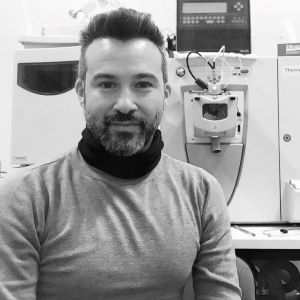Phytochemicals from Fruit and Vegetable By-Products and Wastes and Their Re-use
A special issue of Molecules (ISSN 1420-3049). This special issue belongs to the section "Natural Products Chemistry".
Deadline for manuscript submissions: closed (30 April 2022) | Viewed by 53462
Special Issue Editors
Interests: food analysis, LC–MS/MS; natural bioactive compounds; gastrointestinal bioaccessibility; enzyme-assisted extraction; high added-value molecules from agrifood wastes and byproducts; bioactive peptides
Interests: sensory evaluation of food (wine, fruit juices, sweeteners); analytical techniques useful in food characterization: spectrophotometric (UV-Vis), spectroscopy methods (FT-NIR, FT-IR), chromatographic methods (HPLC, IC, MECK), electronic nose; statistical analysis; correlation between analytical techniques and sensory evaluation; polyphenolic compounds, natural antioxidants, bioactive compounds in food, beverages and wine; nutraceutical and technological exploitation of food grade tannins; food waste recovery
Special Issues, Collections and Topics in MDPI journals
Special Issue Information
Dear Colleagues,
It is our pleasure to present this Special Issue of Molecules, entitled “Phytochemicals from Fruit and Vegetable Byproducts and Wastes and Their Re-use”. It is well known that processing residues generated by the agrifood industry might contain a plethora of bioactive substances and other either small or large molecules, such as proteins, amino acids, pectins, carotenoids, and oils, which are part of human nutrition and can be used as additives in foods, cosmetics, and pharmaceuticals. Additionally, nowadays, many different methodologies can be successfully developed and applied for their extraction and purification from post-processed agrifood matrices.
The aim of this Special Issue is to collect original research articles and reviews on this topic, ranging from method development and optimization to the investigation and exploitation of functional properties of those bioactive compounds extracted from fruit and vegetable industry byproducts and wastes.
In this view, the composition and structural properties of the extracts are examined by means of complementary analytical methods (HPLC, LC–MS, CE, NMR, FT-IR, etc.) to assess their molecular characteristics for potential industrial applications. Also, bioactivity has to be investigated and demonstrated for humans.
The valorization of characterized bioactive substances or other molecules throughout their utilization in established production processes as well as their incorporation into new food products (i.e., fortification, enrichment, novel food, etc.) will be also a matter of interest, together with the evaluation of bioaccessibility and bioavailability of these compounds in extracts or in new complex matrices.
This Special Issue should be of great interest for several disciplines and different research fields, such as fruit and vegetable transformation processes, analytical chemistry, natural product chemistry, phytochemistry, pharmacology, pharmacognosy, medicinal chemistry, pharmaceutical technology and other researchers interested in environmental strategies for the effective and profitable valorization of these substances.
Prof. Dr. Marchetti Nicola
Prof. Dr. Giuseppina Parpinello
Guest Editors
Manuscript Submission Information
Manuscripts should be submitted online at www.mdpi.com by registering and logging in to this website. Once you are registered, click here to go to the submission form. Manuscripts can be submitted until the deadline. All submissions that pass pre-check are peer-reviewed. Accepted papers will be published continuously in the journal (as soon as accepted) and will be listed together on the special issue website. Research articles, review articles as well as short communications are invited. For planned papers, a title and short abstract (about 100 words) can be sent to the Editorial Office for announcement on this website.
Submitted manuscripts should not have been published previously, nor be under consideration for publication elsewhere (except conference proceedings papers). All manuscripts are thoroughly refereed through a single-blind peer-review process. A guide for authors and other relevant information for submission of manuscripts is available on the Instructions for Authors page. Molecules is an international peer-reviewed open access semimonthly journal published by MDPI.
Please visit the Instructions for Authors page before submitting a manuscript. The Article Processing Charge (APC) for publication in this open access journal is 2700 CHF (Swiss Francs). Submitted papers should be well formatted and use good English. Authors may use MDPI's English editing service prior to publication or during author revisions.
Keywords
- agrifood byproducts/waste valorization
- bioactive compound analysis
- fruits and vegetables
- natural products
- chromatography
- spectroscopy
- extraction
- bioaccessibility
- bioavailability







